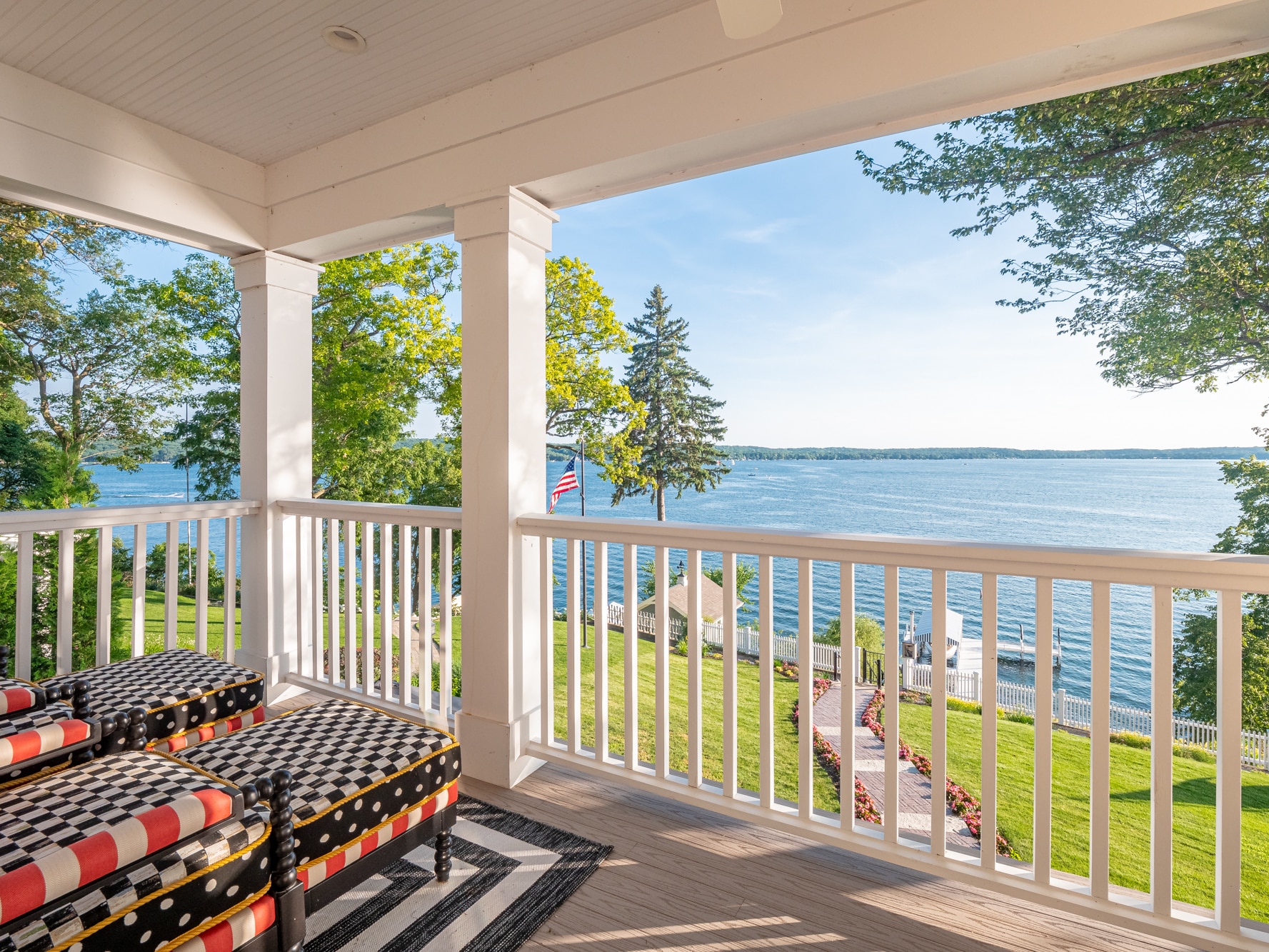Last year, about this time, I sold the home at 254 Circle Parkway in Williams Bay, up on the tip of Cedar Point. The home was lovely, with newer updates and a marvelous boathouse. That home was listed and sold by me in the span of one day, and on October 30th it closed for full price, $2,595,000. Earlier this year, I listed the home at 246 Circle Parkway. It was a nice enough home, in need of updating, on a similar lot (more frontage) than 254 Circle Parkway. I sold that home a couple of weeks ago for $1,820,000. At the end of July, I listed the home at 250 Circle Parkway, in the middle of the two previously mentioned sales, and within days I had competing bids. Last week, that home sold for $2,775,000. One year, three sales, all adjacent. There is a story here.
And the story isn’t about how I’m grateful to have represented each of these three sellers, though that is indeed the truth and my gratefulness only grows with each successive sale, though it could be supposed that this would not be the case. The story here is about a market, and in this case, a specific market in a specific location on this very specific lake. If the lakefront is its own market, which it is, then Cedar Point Park must be its own market, which is again, true. Further still, Circle Parkway is its own market, and in this, there are these three sales. As fate would have it, I closed each of these, so I know them exceptionally well, and having had the listings on each, I know the way the market responded to each of them. An analysis follows.
254 Circle was listed and within moments I had two competing bids. As is often my way when negotiating with two bids, I singled out the bid that appeared to me to be the most viable and negotiated that one quickly. This way, if that bid doesn’t come to contract, I still have the other bid to negotiate. If I try to press both bids, I risk losing them both. In this case, I negotiated quickly with one bid and it stuck. This home was very nice, and the sellers had completed numerous meaningful and impressive upgrades, but the home needed some bathroom and kitchen renovation, and in that, the price was capped. $2,595,000 cash closing was the result of appropriate pricing and swift negotiating. The sale made sense.
246 Circle was listed late this past spring, at a price that was easily defined as aggressive. The property was nice, the view divine, the pier recently expanded and improved. But the home itself was basic and needed some level of updating. By my eye, the property was full of opportunity, yet the market, in spite of a quick initial bid, wasn’t as easily convinced. Even as a spec home on a 60′ lot (considerably narrower lakefront than 246) hit the market in the high $4MMs, this home sat. Soon enough, a lakefront buyer with long term goals took aim and purchased the property. $1,820,000 was the price paid this fall, and that sale made complete and lasting sense.
250 Circle, in the middle of the two, was updated. Marvelously, so. New windows, new siding, new this and new that. Nearly everything, new. Perfect landscaping. A perfect view. Perfect cottage style. The owners know perfection, and having traded through many Lake Geneva homes over the years, they know how to execute it. This property came to market and quickly fielded two offers. As with the 254 sale, we pursued the sale that offered us the preferred set of terms, which, unknown to many buyers, include things other than price. Timing. Contingencies. These matter, often times, as much as price. When 250 closed last week for $2,775,000 (and pushed me over $40,000,000 in closings for 2019), the sale made thorough sense.
Three sales. One street. One year. This is the way a market should work. One home wasn’t renovated at all, and it sold for $1,820,000. One home was mostly renovated, it sold for $2,595,000. The other property was entirely renovated, and it sold for $2,775,000. Often times Lake Geneva doesn’t make sense. Homes come to market in $2MM neighborhoods and find buyers in the $4MMs. This doesn’t make sense to me, and in fact, assaults my sensibilities. The way a real estate market should function, even a market within a market within a market, as is the case on Circle Parkway, is to find a baseline and adjust the value from there. Where this falls apart, at least to me, is when new construction is involved. Buyers are wildly overpaying for new, and as long as that trend continues, expect instances like a fully functioning, fully pragmatic, market like 246-254 Circle Parkway to become increasingly rare.

